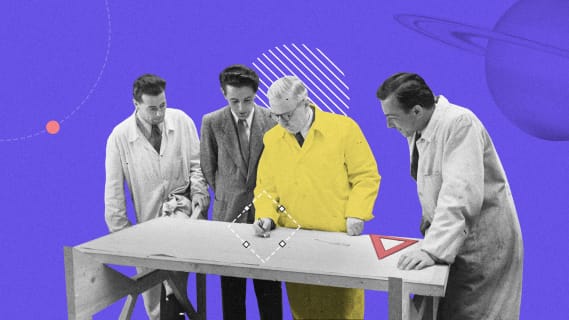May ‘23 Designers’ Digest
Google and Adobe are taking the lead in introducing the newest revolutionary AI tools worthy of every product designer’s attention. In this digest we will take a look at their newest additions and their capabilities. We also cover the future of accessibility as well as the evolution of typography from sources on the newest innovations in UX & UI design. By learning to apply our newly-gained knowledge, we stay at the forefront of change and are able to deliver products much more efficiently with a result satisfactory to both our clients and end users.

Table of contents
Adobe Firefly for designers
Adobe is one of the biggest names in the design and editing industry. Its tools allow us to edit photos easily and efficiently, create illustrations and generate mockups. Its acquisition of Figma may also pave the way for the regular use of AI in product design as we are seeing more AI-powered tools being introduced by Adobe, including its newest addition, Firefly. Find out how it differs from all the other AI tools to date and experience a new way to design.
Read more about Adobe Firefly: Why Adobe Firefly Is A Game Changer
The future of typography
OpenType 2.0 brings new possibilities to the world of design. It might just ignite a new revolution in typography with more possibilities for personalization and text adaptability, which plays a significant role in digital product design. New functional possibilities and increased accessibility features will pave the way for a new attitude towards typography based on flexibility. Its impact may go beyond what we know to be possible today and will become a new standard for the next generation of designers.
Read more about the future of typography with OpenType 2.0: Shaping the Future of Typography: An Exploration of OpenType 2.0 Enhancements and Impact
Accessible UX for chatbots
Chatbots are now a common sight on nearly all e-commerce sites, as well as other platforms offering services which often require the assistance of additional help. When certain processes remain out of a designer’s control and require more than the user can handle, our users need help. Today, this is most commonly seen in the form of chatbots - easily accessible, albeit often not UX-friendly or well-adapted, for example, to the needs of blind users. Learn more on how to make chatbots accessible to individuals with visual impairments and understand their perspective on the issue of using such solutions.
Read more about the accessibility of chatbots in UX design: Making chatbots accessible
Google’s AI for UX & UI designers
Google, like many other companies, has begun providing sneak peeks into its newest AI-driven endeavors. From Imagen to Tailwind and Duet AI, Google is beginning to offer an exponentially growing set of tools, which designers will be able to utilize for generating outstanding images and text, much like other AI tools but with greater precision and access to Google’s extensive resources and image libraries. This will also solve many issues and safety concerns regarding copyright infringement and protection of user data.
Read more about Google’s new AI tools: Google’s New AI Tools Are Great For Designers
Building accessible UX/UI for VR
An increasing number of technology companies are investing in virtual reality and developing their very own VR headsets. Take Apple for example, with their long-rumored headset, eagerly awaited by many tech enthusiasts. Once such devices become a more common sight and prove to be an increasingly integral part of our everyday lives, we must prepare to optimize for the best possible user experience. How can blind people, however, utilize VR technology and how can they become a part of this journey? Learn more about the UX accessibility of VR and how to adjust it to accommodate for the blind, for whom this technology will look much different.
Read more about UX/UI VR for the blind: New Virtual Reality UX/UI for the blind
Stay tuned for next month’s edition of the Designer’s Digest!
Share this article:






